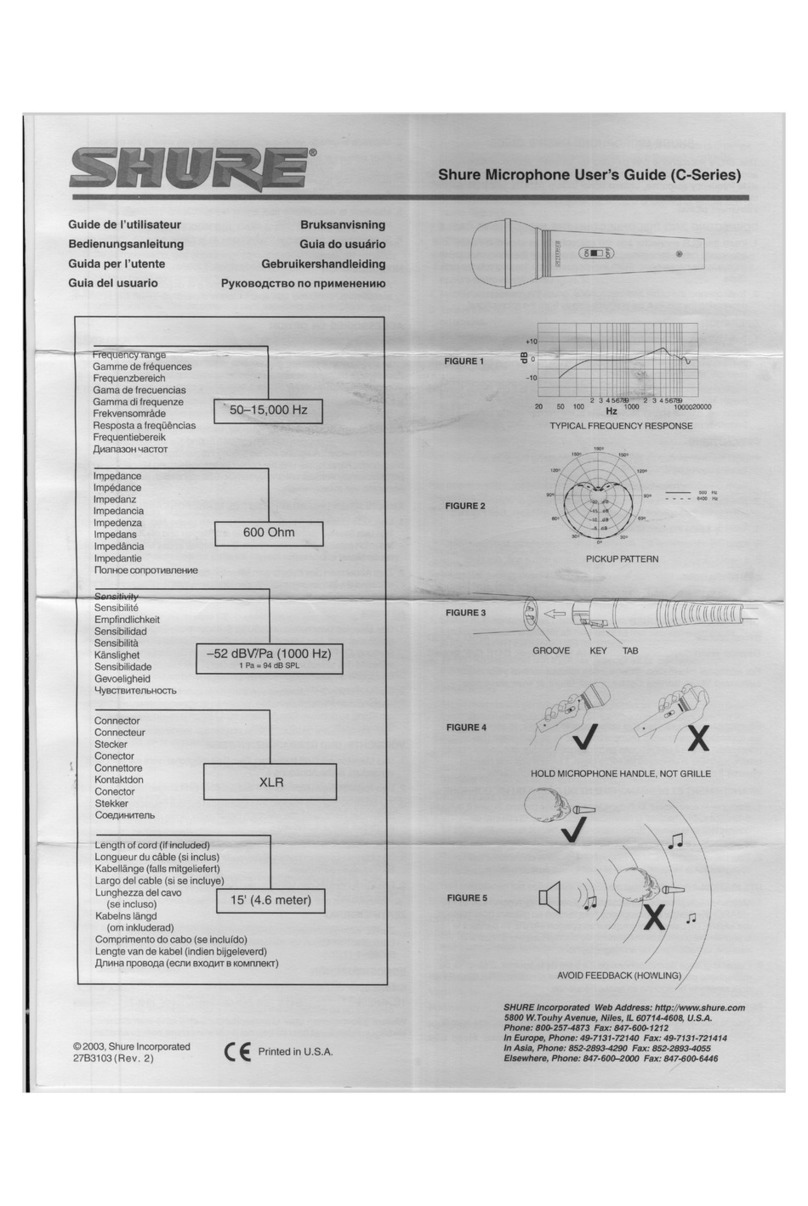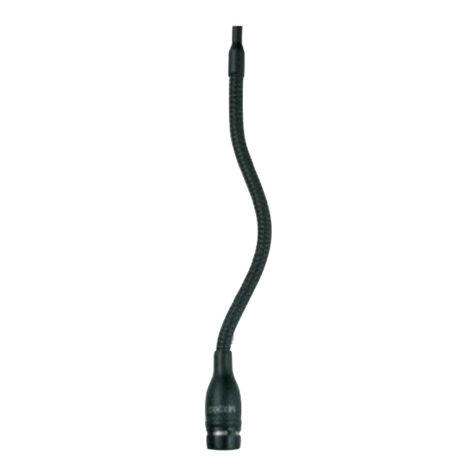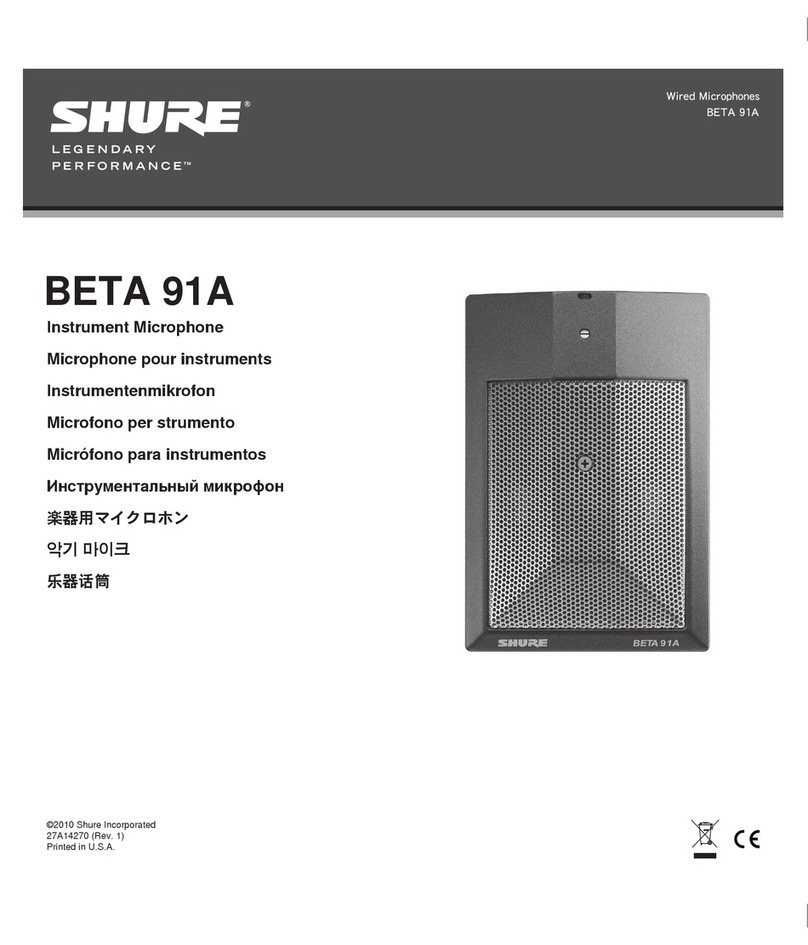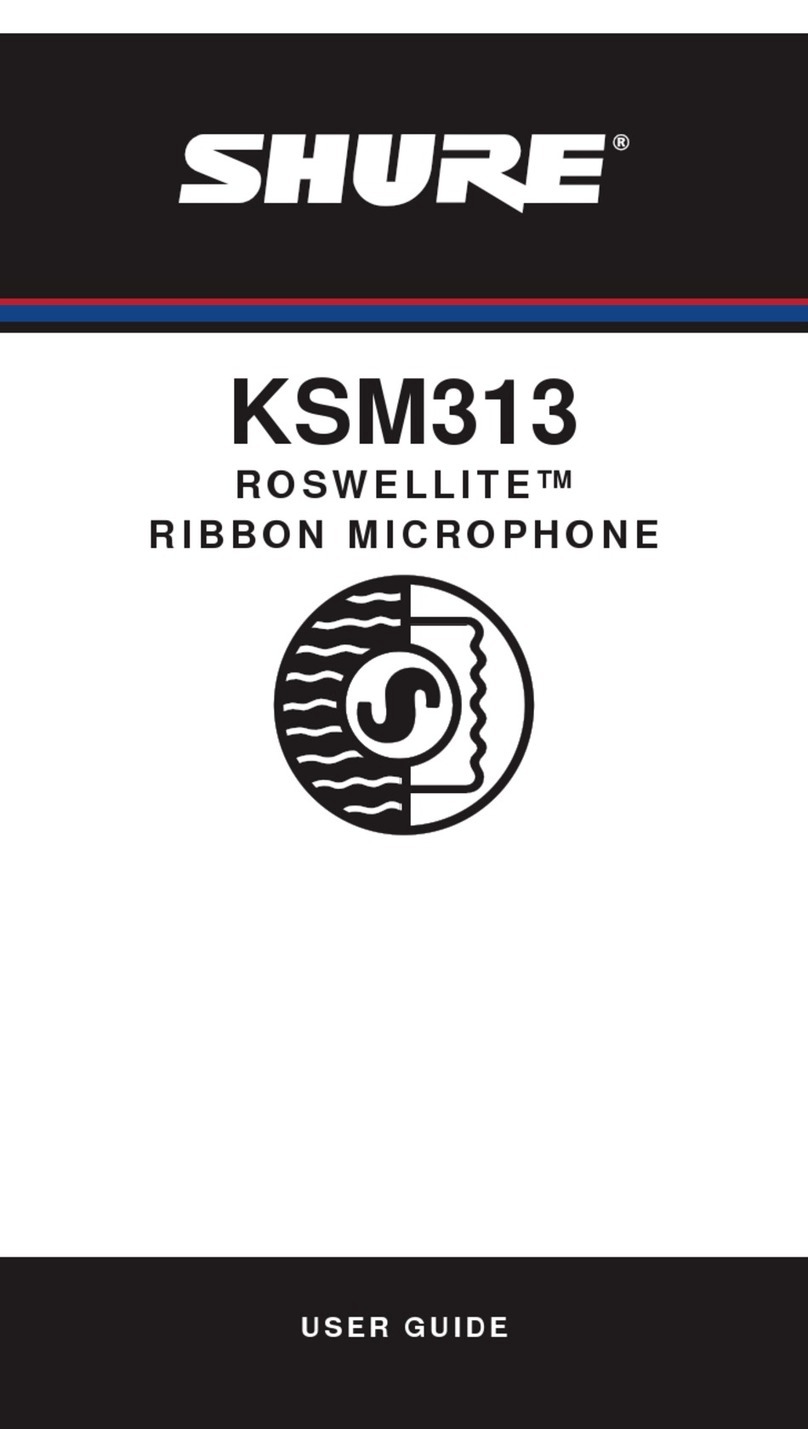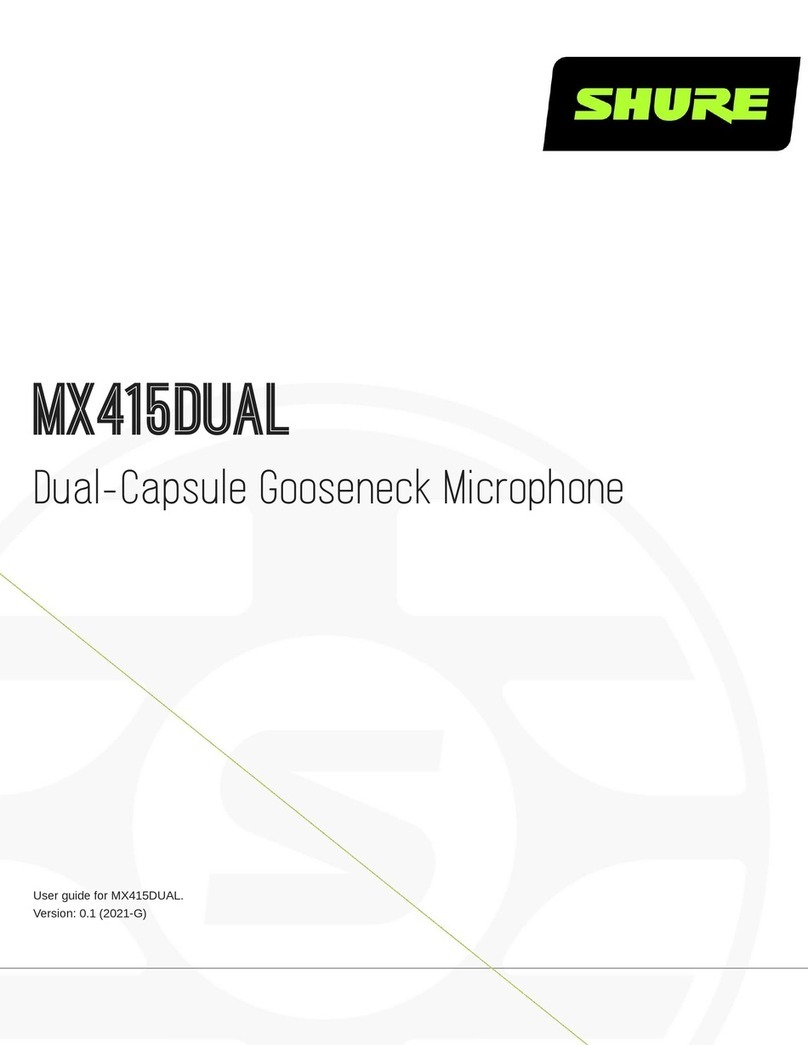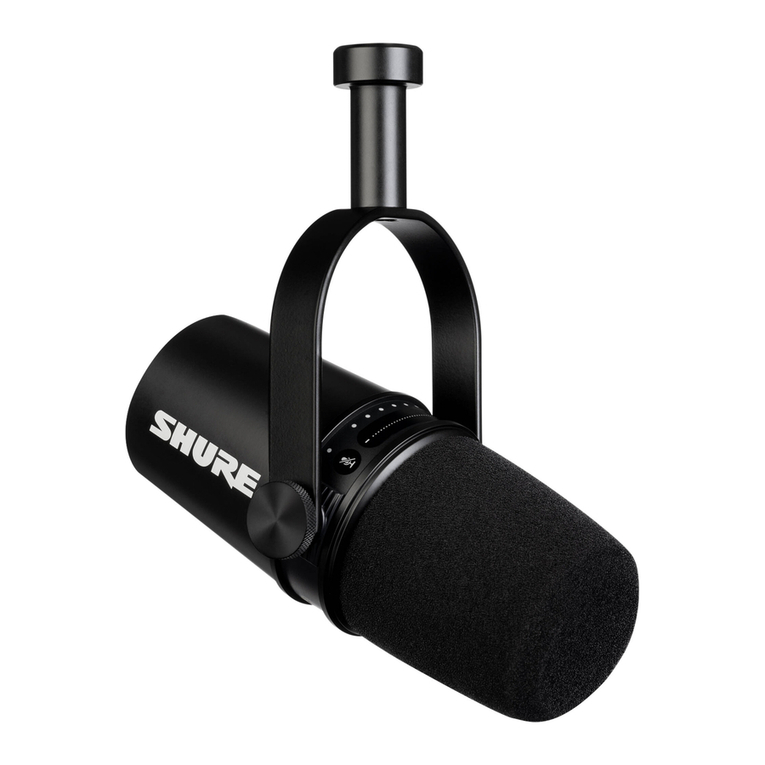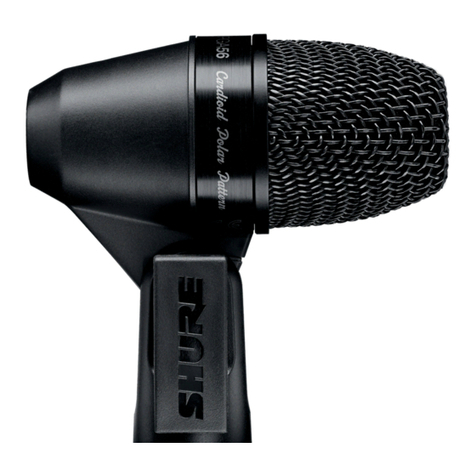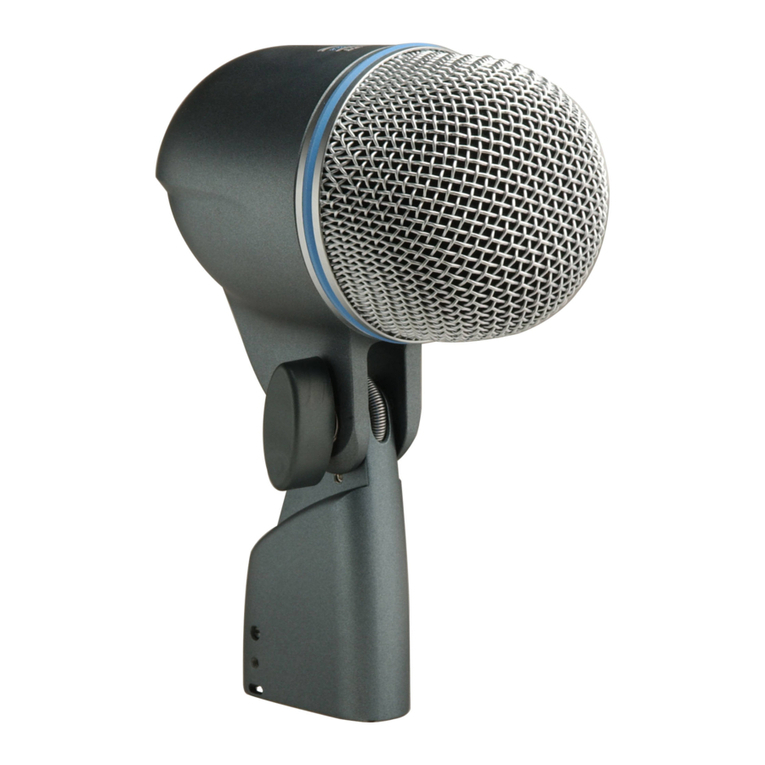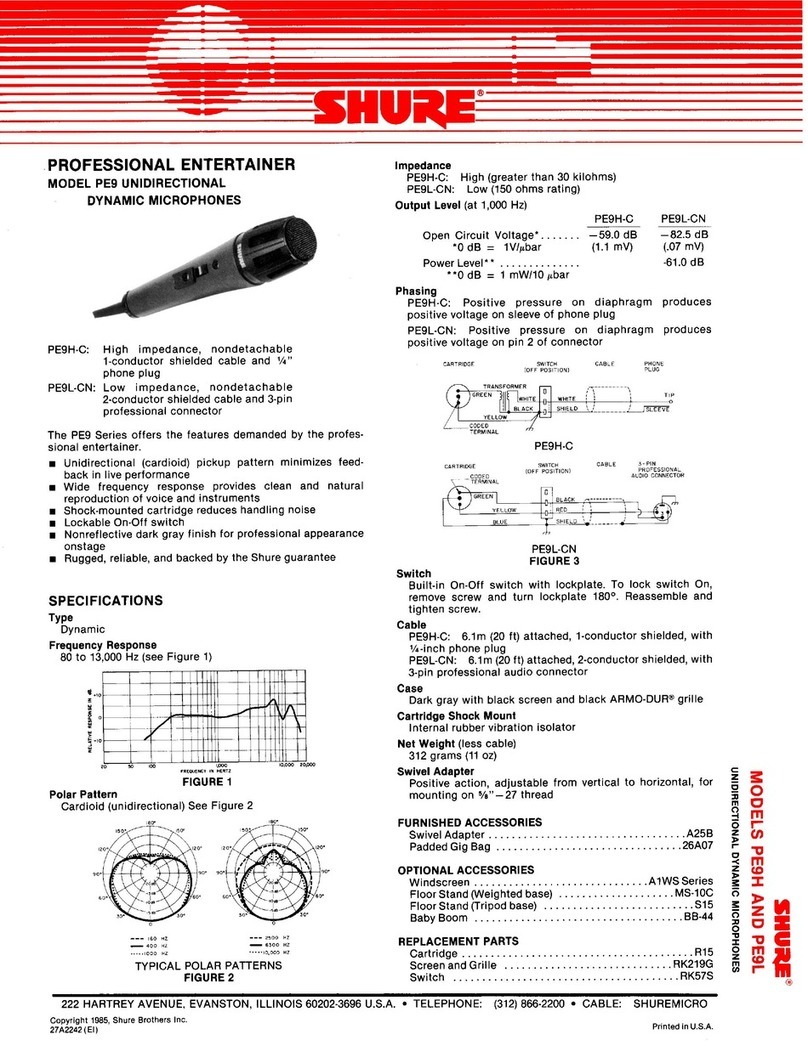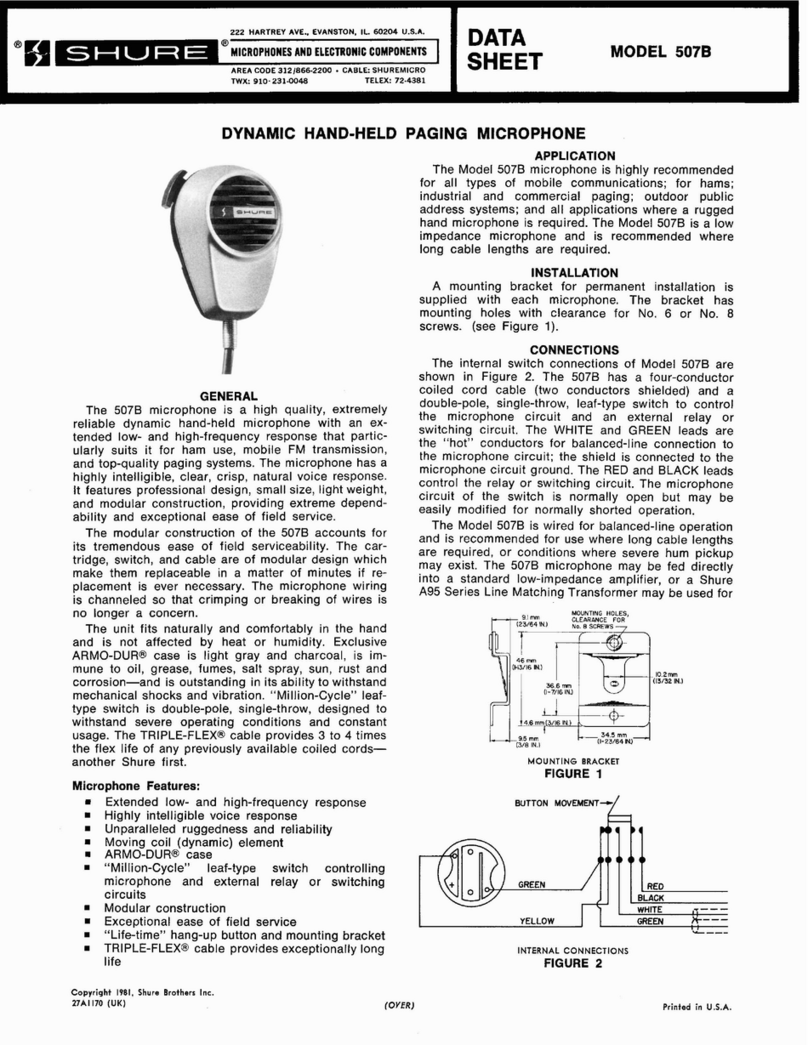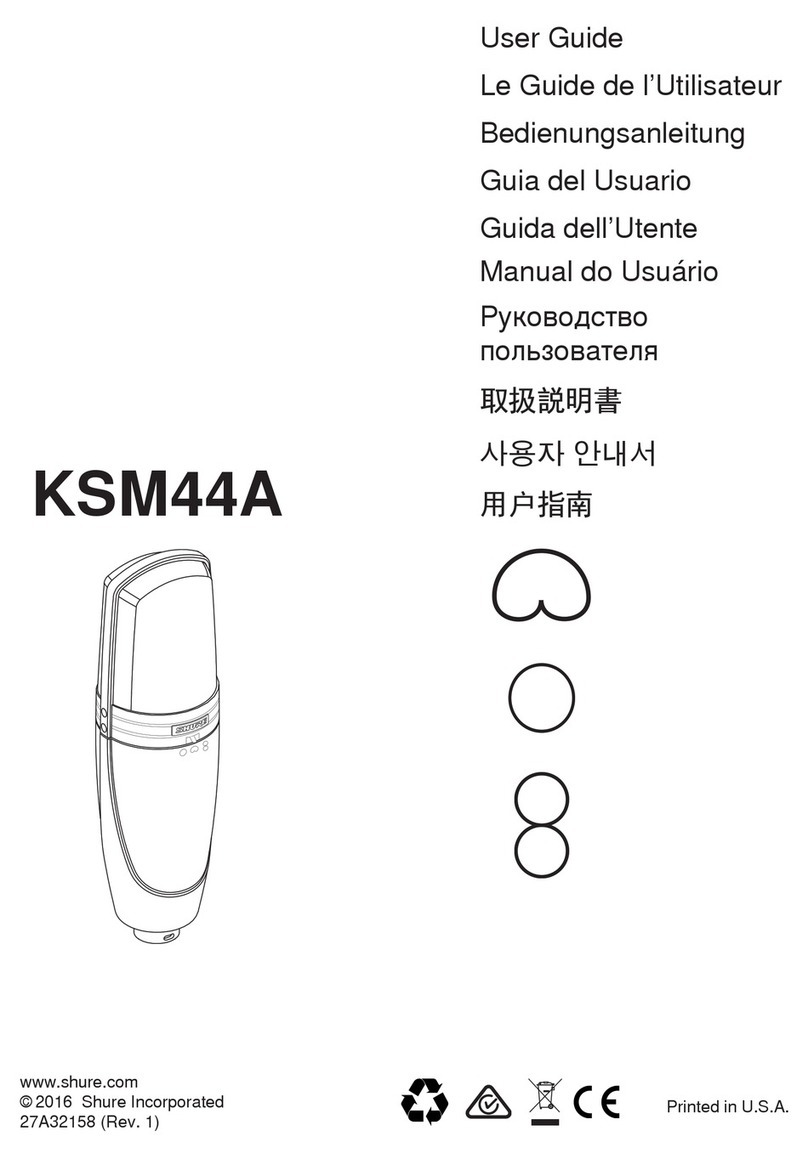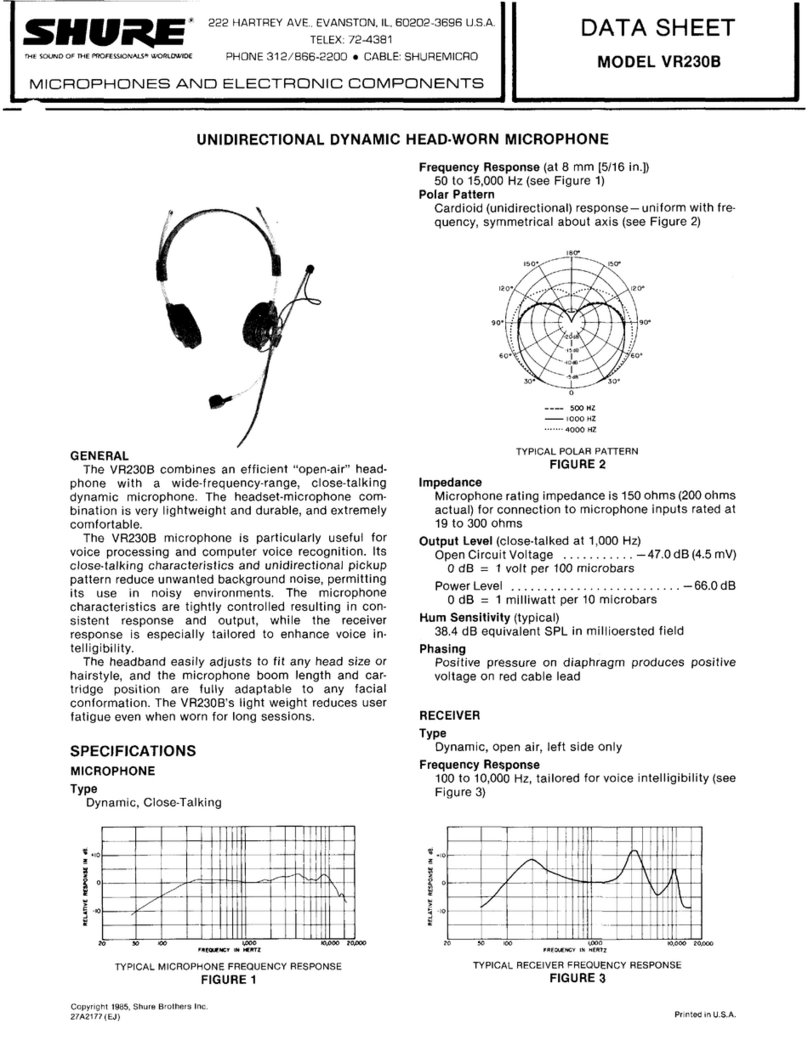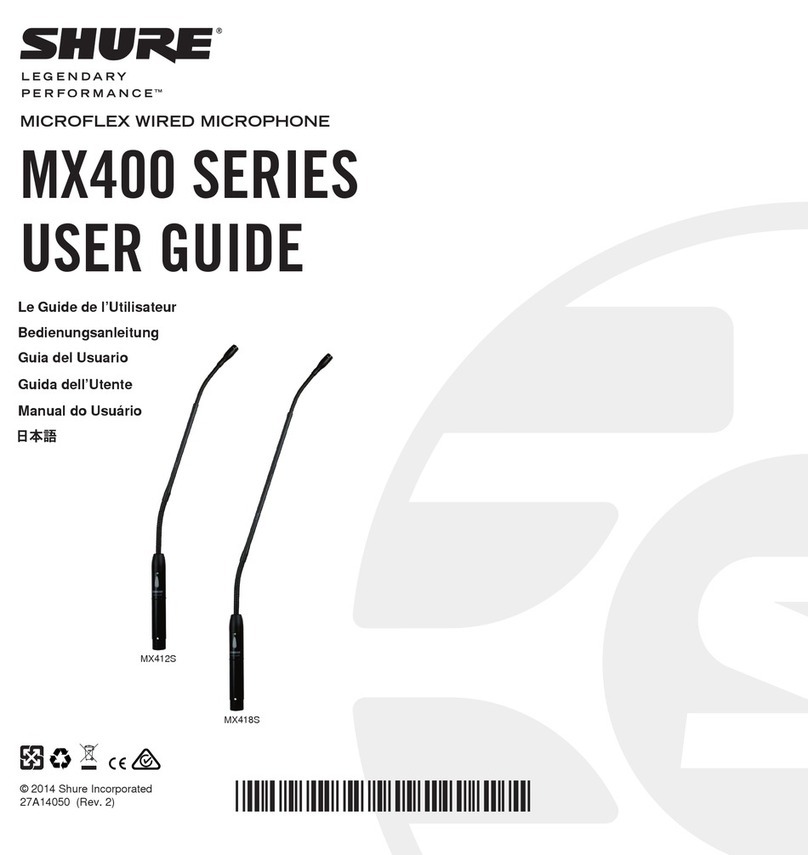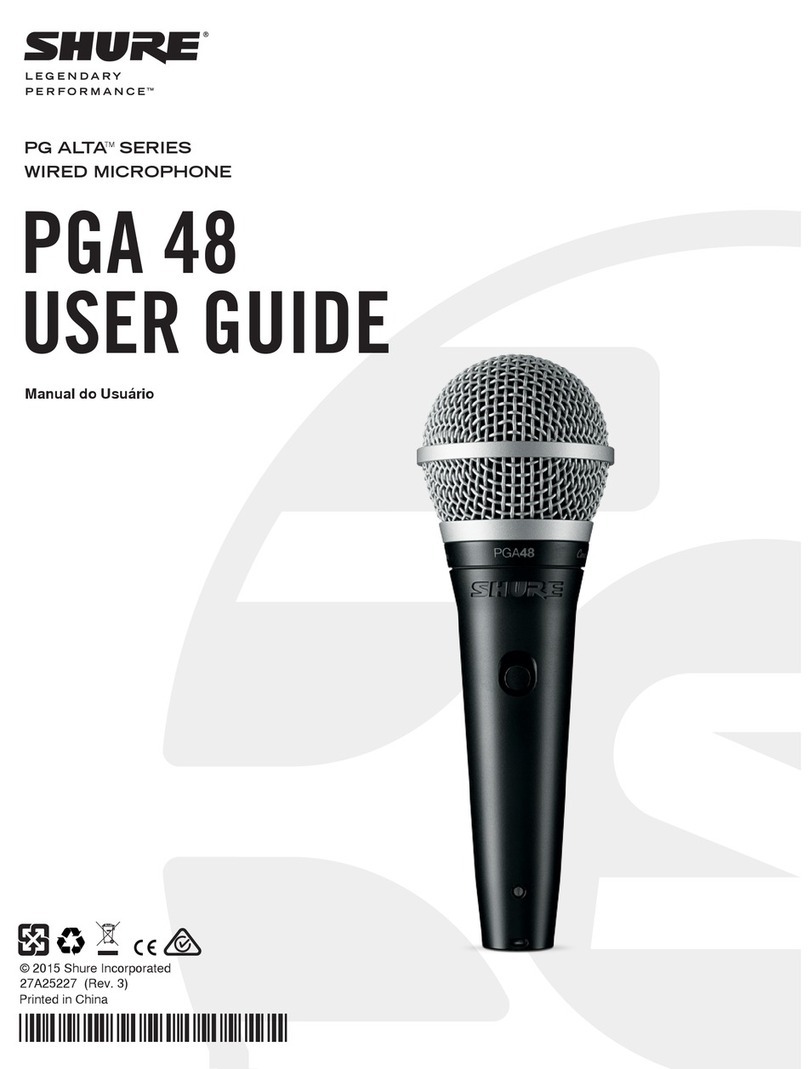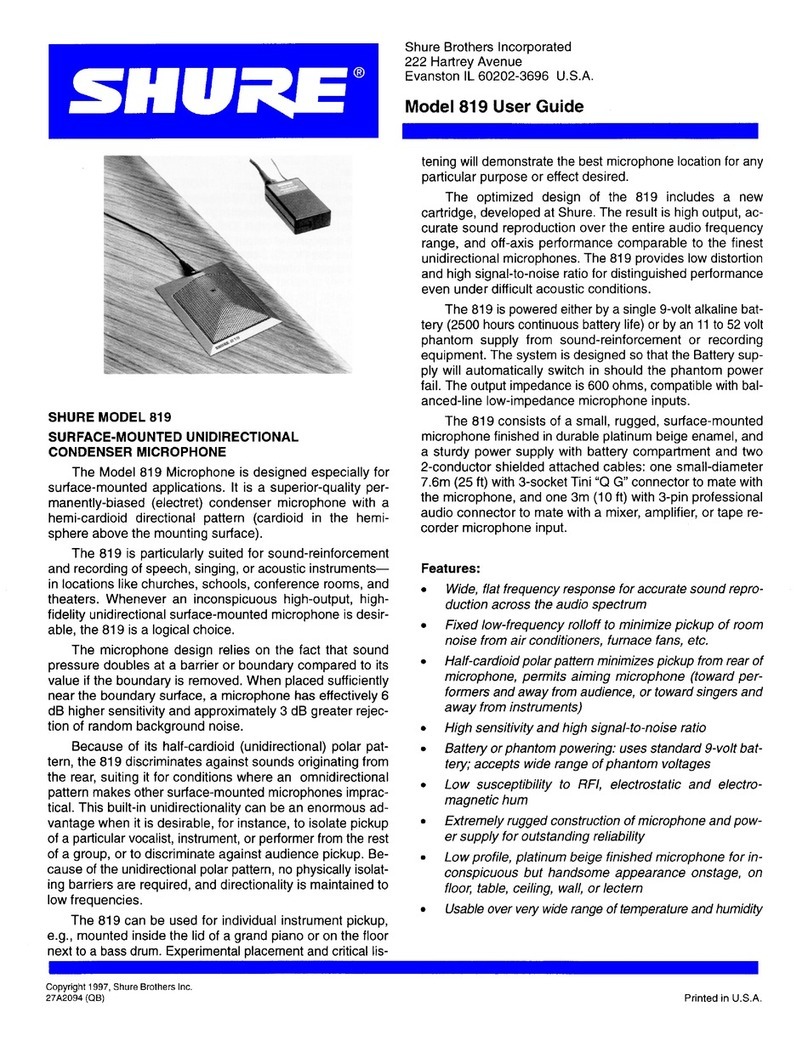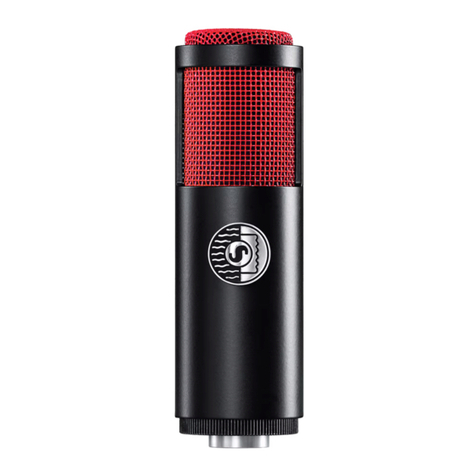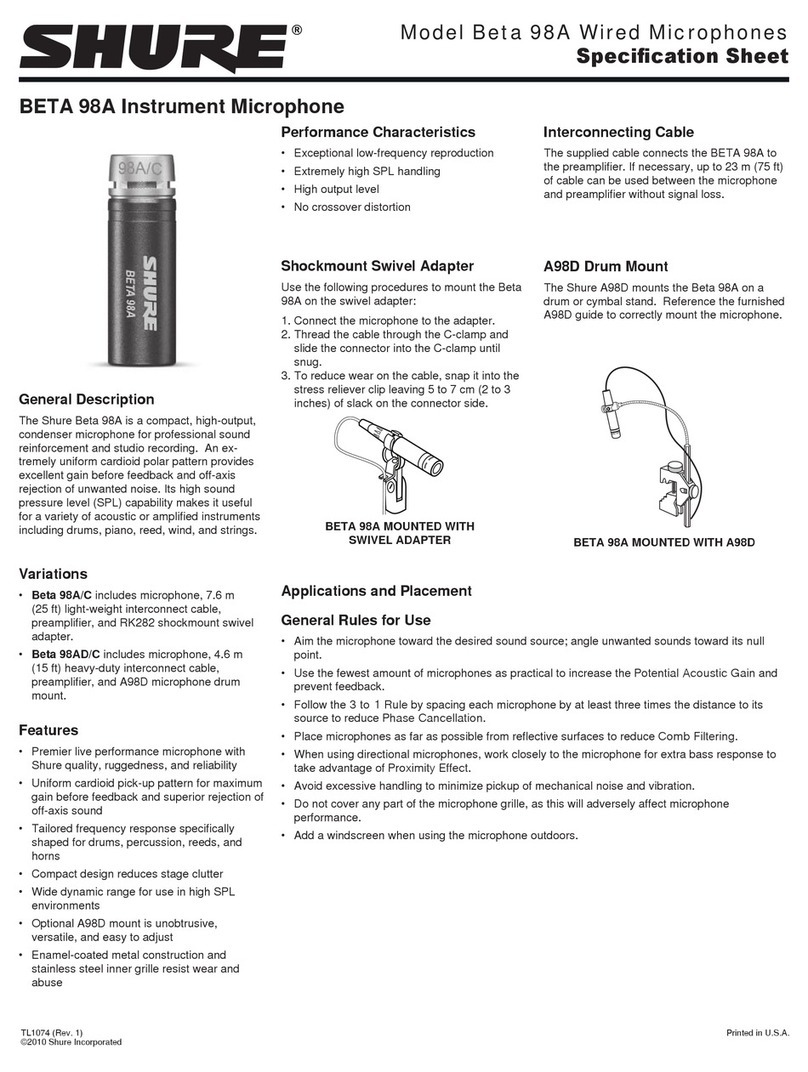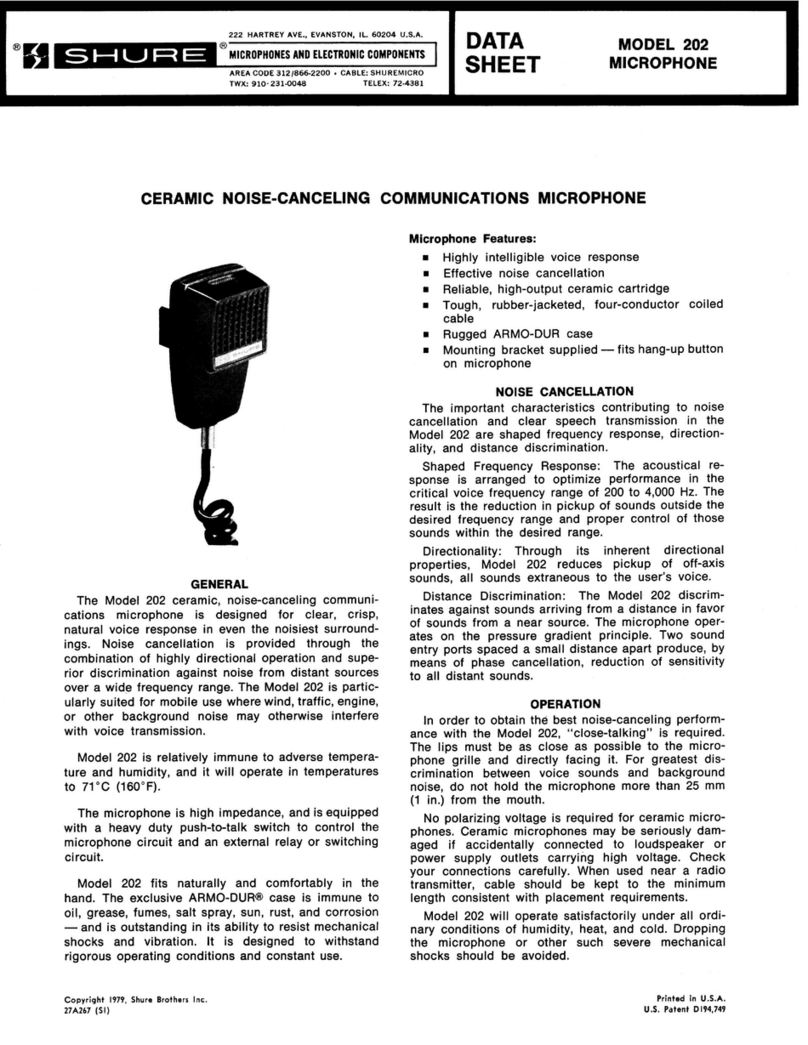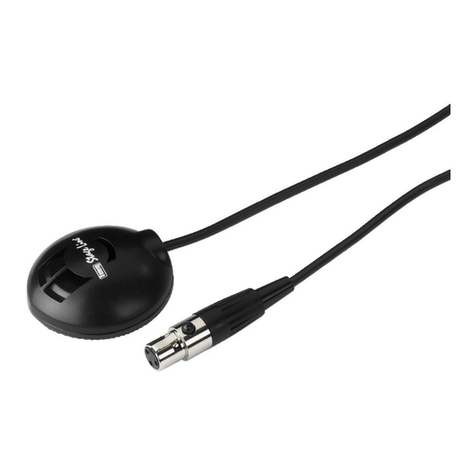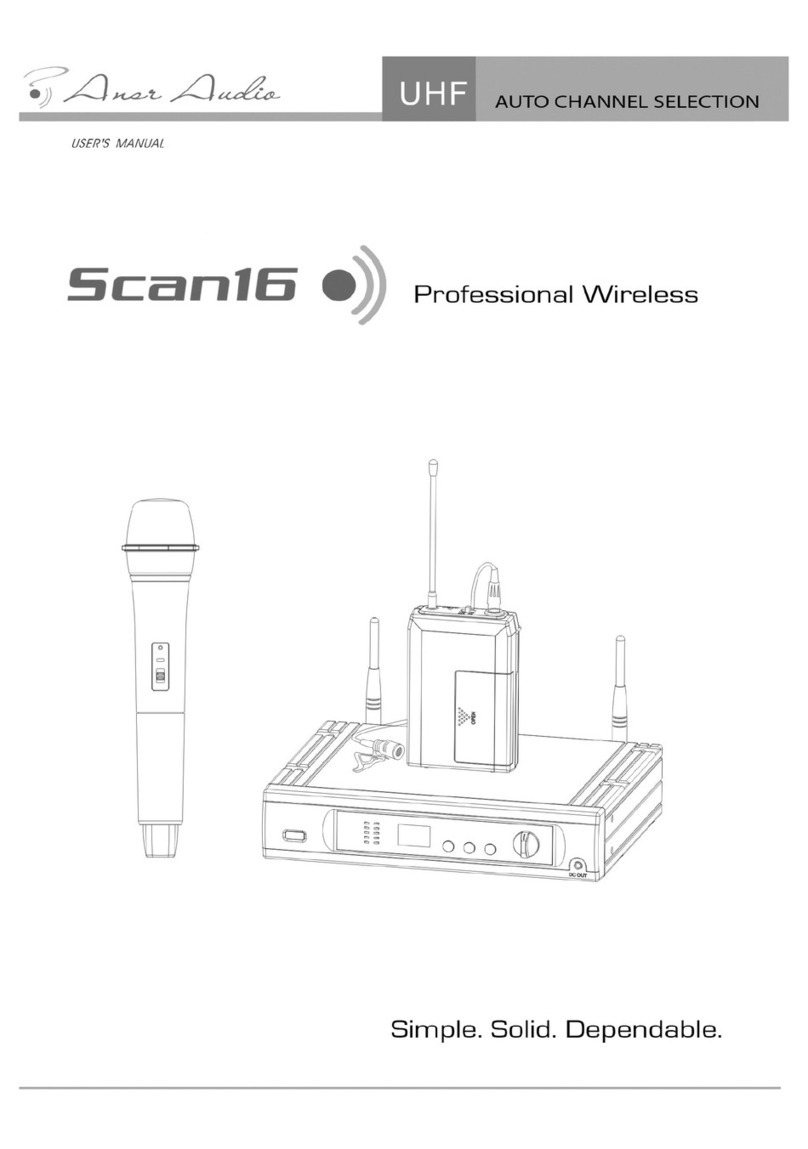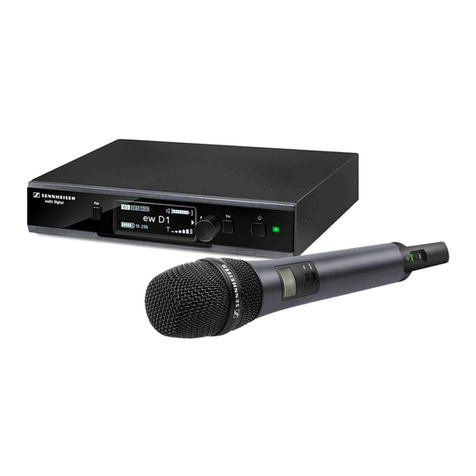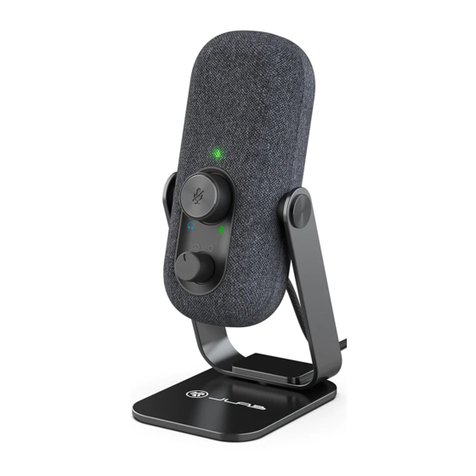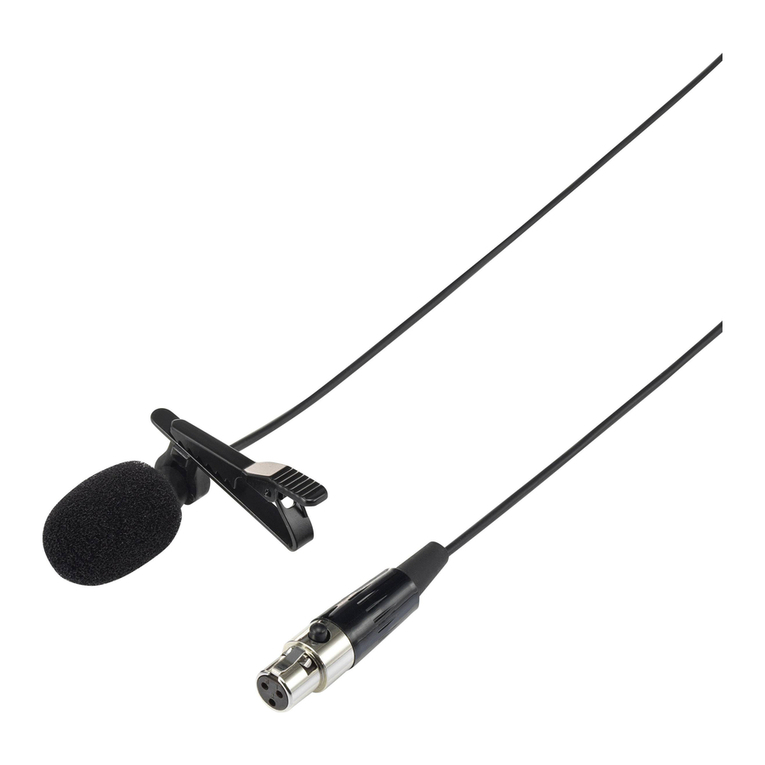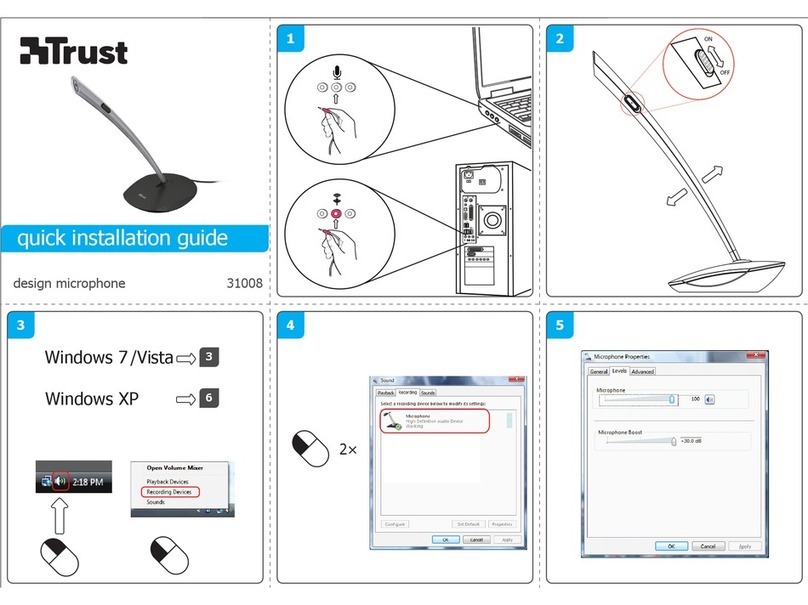
SHURE-QUALITY IS OUR FIRST CONSIDERATION
Congratulations on the purchase of your new Shure microphone. it
will serve you faithfully even in the most difficult circumstances.
Because morethan 50years of experience withmicrophoneshastaught
us one thing: they are not always used under ideal conditions. Far
from it!SoShure develops,designs, builds, and tests them for theworst
conditions we can imagine.
We know they'll be flung into equipment boxes after performances.
We knowthey'll becalled upontofunctionat humidity levels near 100%.
We know they'll be left in the direct rays of the midday sun for hours,
waiting for outdoor concerts to begin. Professional vocalists depend
upon their microphones much as musicians depend upon their in-
struments, but many don't hesitate to throw their Shure microphones
across the stage and down on the floor-violently -as part of their per-
formance. They never give it a second thought. They know that Shure
microphones shrug off abuse that would make others fail.
Shure reliability begins during the design stage. Shure has a staff of
specialists whose sole function is to uncover any weaknesses before
Shure microphonesare put intoquantity production. During the testing
process, microphones are:
Heated at temperatures up to 85OC (185OF) often for entire days
Frozendownto -46OC (-50°F) for half-hourperiods
during
the heat
test
Shaken from side to side, back and forth, and up and down,
simultaneously and violently
Subjected to steamy humidities-up to 100% at room temperature
and 93% at 38OC (lOO°F)
Subjected to ultraviolet rays, salt sprays, alcohol, sand, and water
And for good measure,dropped repeatedly 2 meters (6 ft) onto hard-
wood floors.
That isour
standard
test procedure. All during production, units chosen
at random are put through these same tests. Failure of any one
microphone brings production to a halt until the original design re-
quirements are again met.
That's why at Shurewe say, quality isour first consideration.The pur-
chasers of the millions of microphones bearing the name Shure during
past years, and those now buying their.first Shure microphone can rely
on us to continue tofollow the philosophy and policies that keep Shure
microphones working dependably-year after year after year.
Quality is our first consideration!
BASIC MICROPHONETECHNIQUE
Good microphone technique will add to your effectiveness as a per-
former. Keepthe following pointsinmindwhen usingyour ShureProfes-
sional Entertainer Microphone.
1. Maintain the proper distance fromthe microphone. When you want a
warm, full sound, get close to the microphone and lower your voice.
For a wide open, driving sound, raiseyour voice and back away from
the microphone to avoid overdriving the amplifier into distortion.
2. Don't change your distance from the microphone needlessly as this
will affect the level of sound coming from the loudspeakers.
3. Your Shure PE Microphone isyour link to the audience. Consider the
microphone an instrument and develop your technique through
practice.
FEEDBACK AND UNIDIRECTIONALMICROPHONES
A performer's worst enemy in usinga microphoneis"feedback". This
isa harsh hum, howl, or squeal that occurs when the microphonepicks
up sound from the loudspeakers, reamplifies and rebroadcasts
il
over
and over again. This vicious circle results in feedback.
A unidirectional microphone aids in preventing feedback because it
rejects sound that originates from the sides and rear. Sound pickup
from the sides isreduced by about one half, and pickup from the rear is
reduced by about nine tenths. You can demonstrate this reduction in
pickup by repeating"Test one, two" or some other convenient phrase as
you rotate the microphone from front to back.
Using unidirectional microphones close to the performer or instru-
ment ensures that the direct sound will be much louder than the
feedback-producing amplified sound. Becausethe amplifier gain can be
turned up less to achieve the desired overall loudness, the amplified
sound will likely remain below the volume that triggers feedback.
Other helps inpreventingfeedback are: keepthe loudspeaker as far
tothe sides as possible; be sure that the microphones point toward the
performers and away fromthe loudspeakers; and makecertain that any
stage monitor speakers are positioned in front of the performers and
face the insensitve rear of the microphone.
UNIDIRECTIONALMICROPHONES, OMNIDIRECTIONAL
MICROPHONES, AND PROXIMITY EFFECT
Because of their usefulness in reducing the likelihood of feedback,
unidirectional microphones are best insound reinforcement and public
address; while omnidirectional microphones are best in recording
where feedback problems do not arise, or for close-miking instruments
and amplifiers.
When unidirectional microphones are used close to a vocalist or
musical instrument, there is an increase in bass (low-frequency)output
called proximity effect. At a distance of about 6mm
(lh
in.) a typical in-
crease is shown on the curve below.
Proximity effect can be used to improve your sound.
1. With vocalists, it increases warmth, giving a fuller quality to the
voice.
2. With instruments, it provides a flat or boosted bass output without
tone controls, simply by changing the distance between source and
microphone; and close miking provides natural isolation by minimiz-
ing bass pickup of other instruments.
Most Shure unidirectional microphones are designed with a bass
response that provides control at low frequencies yet still allows prox-
imity effect to be used advantageously when desired. To employ prox-
imity effect, you needto hear the amplified result. Just as you practice
your instrument,you willwant topractice your microphonetechniqueto
get the precisesound you want. (A good way to hear the actual result of
proximity effect is to'use monitor speakers or headphones if they are
available.)
omnidirectional microphones do not exhibit proximity effect when
used closeup. Because the response does not change with angle or
distance fromthe performer, an omnidirectional microphoneisvaluable
when the sound must stay the same for several performers positioned
around the microphone, or for a performer who moves from place to
placeduring a playor interview. But beawareof feedback problemsthat
may occur if omnidirectional microphones are used when sound
amplification is present.
CHOOSINGA MICROPHONEEXTENSION CABLE
Low-impedance microphones can be used with practically unlimited
lengths of cable with no added noise or high-frequencyloss. Any Shure
2-conductor balanced cables (e.g., C25B, C25E, C25F, C50F, ClOOF, or
C20H) can be used as extension cables for Shure low-impedance
microphones. These cables can also be used inany required lengths or
combinations betweena low-impedancemicrophoneand theC25G Low-
to-High-ImpedanceCable-Transformer or between the microphone and
an A95UF Matching Transformer.
High-impedance microphone cables are usually limitedto6.lm (20ft)
to avoid high-frequency loss or possible noise pickup. If longer cables
are needed with high-impedance microphones, use such Shure cables
as the C25B, C25E, C25F or C20H to reach the required distance. Then
add the C20A to plug into the equipment. Adjust the treble control on
the equipment to compensate for the high-frequencyrolloff caused by
the extra length of cable.
Look for the Shure
Audio Connection"
for quality microphonecables.
GUARANTEE
This Shure product is guaranteed in normal use to be free from elec-
trical and mechanical defects for a period of one year from date of pur-
chase. Pleaseretain proof of purchase date. This guarantee includes all
partsand labor. This guarantee is in lieu of any and all other guarantees
or warranties, express or implied, and there shall be no recovery for any
consequential or incidental damages.
SHIPPING INSTRUCTIONS
Carefully repack the unit, have it insured, and return it prepaid to:
Shure Brothers Incorporated
Attention: Service Department
222 Hartrey Avenue
Evanston, Illinois 60204
If outside the UnitedStates, return the unit to your dealer or Authorized
ShureServiceCenter for repair. The unit will be returnedtoyou prepaid.
